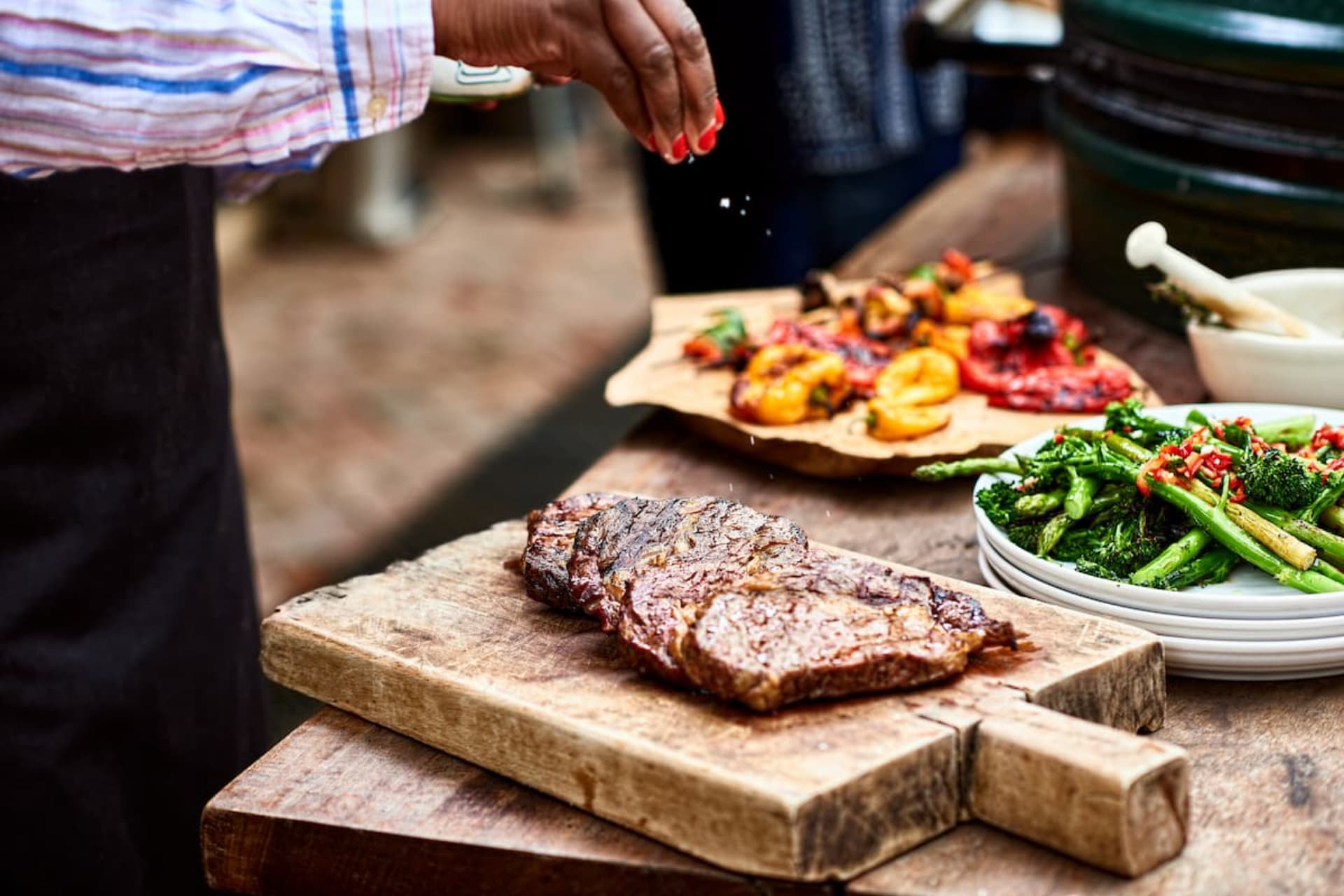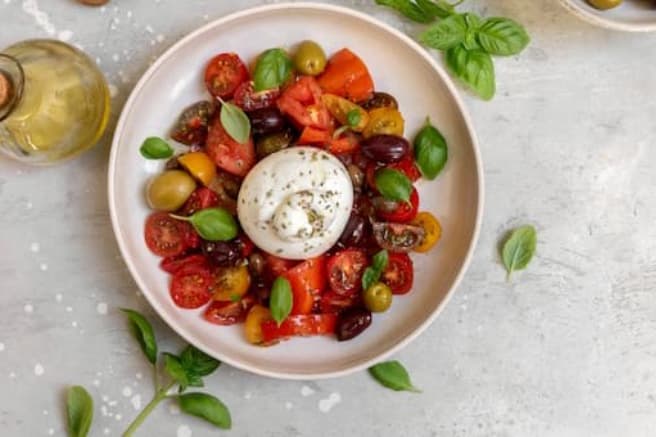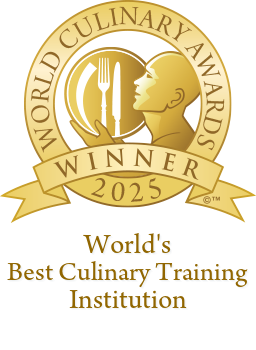What styles of cooking should a chef know?

With cooking having been around for more than 780,000 years, it’s no wonder there are plenty of techniques. From traditional methods passed down through generations to innovative ideas that push the boundaries of gastronomy, there are various cooking styles that can increase a chefs repertoire and boost their creativit. This article looks into the essential cooking styles every chef should know, offering insights into the techniques, flavors and uses for them. Whether you are an aspiring chef or a culinary enthusiast, understanding these styles will enrich your educational journey and boost your skills in the kitchen.
Heat-based cooking methods
Mastering various heating-focused culinary techniques is fundamental for any chef, as each different method brings unique flavors and textures to dishes. We’ll look at the three main categories: dry heat, moist heat and combination cooking, providing insights into their different characteristics and applications.
Dry heat cooking methods: enhancing flavors without moisture
Using direct or indirect heat without adding fluids, which allows for the development of complex flavors through caramelization and Maillard reactions. These techniques are ideal for creating crisp textures and rich, deep undertones, making each one an essential cooking skill. Examples include:
-
Roasting: typically used to cook meats and vegetables, this involves placing food in an oven with dry, indirect heat and is perfect for achieving a browned, flavorful exterior while maintaining a soft interior
-
Baking: similar to roasting, but mainly used for pastries, bread and casseroles. Baking can achieve an even, golden crust
-
Broiling: using high, direct heat from above, typically in an oven’s broiler. This is excellent for quickly cooking thin cuts of meat and melting or browning toppings
-
Sautéing: cooking items quickly in a small amount of oil or fat over medium-high to high heat. This method is perfect for vegetables, small pieces of meat and seafood, allowing for a slight caramelization and maintaining a crisp texture
-
Frying: cooking food in hot oil or fat, which can be shallow or deep. This method creates a crispy, golden exterior while heating the interior evenly
Moist heat cooking methods: nutrient preservation and tenderization
Using water or steam to transfer heat to food. These methods are excellent for tenderizing tougher cuts of meat and preserving the nutritional content of ingredients. Such basic cooking techniques include:
-
Boiling: cooking food in water at a rolling boil. This method is suitable for pasta, potatoes and blanching vegetables to preserve their color and nutrients
-
Simmering: gently bubbling items in water or broth at a temperature just below boiling. Ideal for soups, stews and braises, simmering allows flavors to meld and ingredients to tenderize
-
Steaming: a gentle method that retains nutrients and moisture, making it perfect for vegetables, fish and dumplings
-
Poaching: gently heating food in liquid at a low temperature, typically between 160°f to 180°f. This method is ideal for delicate foods such as eggs, fish and fruit, ensuring they remain tender and flavorful
Combination cooking methods: best of both worlds
Deploying dry and moist heat techniques, which offers the benefits of both worlds. These methods are especially useful for developing complex flavors and tenderizing tougher cuts of meat and include:
-
Braising: cooking food slowly in a small amount of liquid after first browning it. This method is ideal for tough cuts of meat and hearty vegetables, resulting in rich, flavorful dishes
-
Stewing: similar to braising, but with more liquid. This involves cooking smaller pieces of meat or vegetables submerged in liquid, allowing for deep flavor integration and tenderization
-
Slow cooking: with a focus on developing flavors over a much longer time, this is a good way to ensure food remains moist after initially rendering off fats or browning meat
Exploring global cooking techniques
The culinary world is full of different flavors and methods, with each culture contributing unique styles that have evolved over centuries. Exploring global cooking techniques can greatly boost a chef’s versatility and understanding of diverse cuisines. In this section, we will explore some key cooking styles from around the world.
Asian culinary secrets: a blend of tradition and taste
Renowned for its intricate balance of flavors, textures and cooking techniques that emphasize simplicity and complexity, Asian cooking uses methods such as:
-
Stir-frying: a quick cooking style using a hot wok and a small amount of oil. Ingredients are continuously tossed, ensuring even heating and preserving texture and nutrients. Common in Chinese cuisine, it’s perfect for vegetables, thin cuts of meat and seafood
-
Fermentation: key in Korean cuisine, this is used to create kimchi, a staple made from fermented vegetables and other preserved foods. This process enhances flavors and adds beneficial probiotics
-
Tempura: a Japanese technique of batter-dipping and deep-frying vegetables and seafood. Tempura is known for its light, crispy texture and is served with dipping sauces

Mediterranean moods: healthy fats and fresh flavors
This type of cooking is celebrated for its emphasis on fresh, wholesome ingredients and healthy fats, creating vibrant and nutritious dishes. Primary methods to learn are:
-
Charcoal grilling: a central technique in Mediterranean cuisine, grilling imparts a smoky flavor to meats, fish and vegetables
-
Use of olive oil: the cornerstone of Mediterranean cooking, olive oil is used for sautéing, drizzling and as a base for dressings and marinades. It boosts the flavor of dishes and adds healthy fats
-
Herb infusion: fresh seasonings such as basil, oregano, rosemary and thyme are used abundantly to infuse dishes with aromatic flavors, whether in marinades and sauces or as finishing touches
Latin American liveliness: spices and salsas
Vibrant and diverse, this cuisine is known for its bold flavors, colorful presentations and a variety of spices and salsas. It is important to learn about:
-
Barbecuing: techniques such as the Argentinian asado and Brazilian churrasco involve grilling meats over open flames or hot coals, resulting in smoky, flavorful dishes
-
Sofrito: common in many Latin American kitchens, frying is used to prepare sofrito, a base of sautéed onions, peppers, garlic and tomatoes, which adds depth to many dishes
-
Spice blends: using a variety of spices and herbs, including cumin, chili powder, coriander and cilantro, to create complex and robust flavors
-
Salsas and sauces: fresh and cooked salsas, such as pico de gallo and salsa verde, are integral to Latin American cuisine. These condiments add freshness, heat and acidity to dishes
Middle Eastern magic: aromatic herbs and slow cooking
Characterized by its aromatic herbs, spices and slow-cooking methods, Middle Eastern food produces rich and flavorful dishes. Be sure to learn about:
-
Spice blends: spice mixes such as za’atar, baharat and ras el hanout are essential in Middle Eastern cooking. They add depth and complexity to meat and vegetable dishes
-
Slow roasting: used for dishes such as shawarma and kebabs, where marinated meats are cooked slowly with dry heat to increase flavor and tenderness
-
Herb and nut mixtures: mixtures such as dukkah, a blend of herbs, nuts and spices, are used to season meats and vegetables or as dips, adding a unique texture and flavor profile
Specialized cooking techniques for advanced chefs
More practiced chefs often push culinary boundaries by mastering specialized cooking types that require precision, patience and a deep understanding of ingredients. These boost flavors and showcase the chef’s expertise and creativity in the kitchen.
Fermentation: unlocking flavors through microbes
A scientific process where bacteria, yeasts and molds break down sugars and starches in food, producing flavorful acid, alcohol and gas compounds. This improves flavors and textures, preserves foods naturally and adds nutritional value through probiotics. It is commonly used in creating foods such as kimchi, sauerkraut, sourdough bread and miso. Chefs experiment with fermentation to develop unique flavors in dishes. Controlling temperature, moisture and time are important for success.
Sous vide: precision in temperature control
French for ‘under vacuum’, this is a cooking technique where food is vacuum-sealed in a bag and cooked in a water bath at a precisely controlled temperature. It ensures consistent results, improves flavors and textures and retains nutrients and moisture in ingredients. Sous vide is ideal for cooking proteins such as steak, fish and poultry as well as vegetables and fruits. Chefs can infuse flavors by marinating foods in the bags. It requires immersion circulators or water ovens to carefully maintain temperature.
Smoking and curing: depth of flavor through preservation
Ancient preservation techniques that impart rich, complex flavors to foods through exposure to smoke and salt. Smoke from burning wood or herbs adds smoky flavors and aromas. Cold smoking (at lower temperatures) is used for delicate foods such as cheese and fish, while hot smoking (at higher temperatures) cooks and flavors meats. Curing with salt or sugar preserves foods. Dry curing involves applying a salt mixture directly to the food's surface, while brining involves submerging foods in a saltwater solution. This process boosts flavors and extends shelf life. Chefs experiment with different types of wood and herbs for smoking and various curing techniques for unique results.
How to learn cooking styles
Mastering various culinary methods is a path that requires dedication, practice and dedication to learning the intricacies of each technique. Whether you're a novice chef looking to expand your repertoire or an experienced cook aiming to refine your skills, the effective ways to learn different cooking styles are the same.
Formal culinary education
Pursuing training through schools or programs provides a structured approach to learning cooking styles. Culinary institutions offer courses that cover fundamental techniques, advanced methods and specialized cuisines taught by experienced chefs. Hands-on experience is important and practical classes allow you to apply theoretical knowledge in a controlled kitchen environment. Following a set curriculum ensures a comprehensive understanding of cooking styles, building foundation skills before you move onto more advanced techniques.
Internships
Learning directly from experienced chefs through placements offers invaluable hands-on experience and mentorship in professional kitchens. On-the-job training allows you to gain practical skills and insights into specific cooking styles by working alongside experienced professionals. Exposure to diverse techniques is key and you can rotate through different sections of the kitchen (such as pastry, grill and sauté) to learn more about various cooking methods and their applications.
Self-study and practice
Exploring cooking styles at your own pace and experimenting with recipes and techniques in your home kitchen is a great way to learn. Use reputable cookbooks and online resources that provide detailed instructions, recipes and video tutorials on different cooking styles. Regular practice is needed if you want to master fundamentals such as flavoring, temperature control and ingredient preparation and enables you to build confidence and proficiency over time.
Conclusion
In the world of culinary arts, there is a wide range of different cooking styles that allows chefs to express their creativity and skill. From fundamental techniques such as grilling and sautéing to specialized methods such as sous-vide and fermentation, each offers a gateway to unique flavors, textures and cultural significance.
Understanding these styles expands a chef's repertoire and improves their ability to innovate and adapt in the kitchen. Whether inspired by Mediterranean simplicity, Asian precision, Latin American vibrancy or Middle Eastern depth, chefs who embrace a wide range of cooking styles can craft dishes that delight the senses and tell compelling culinary stories.
Proficiency in various techniques also empowers chefs to cater to diverse tastes and dietary preferences, making them versatile professionals in the dynamic hospitality industry. If you want to master different cooking styles, see how a degree from a French culinary school such as Ecole Ducasse can help.


